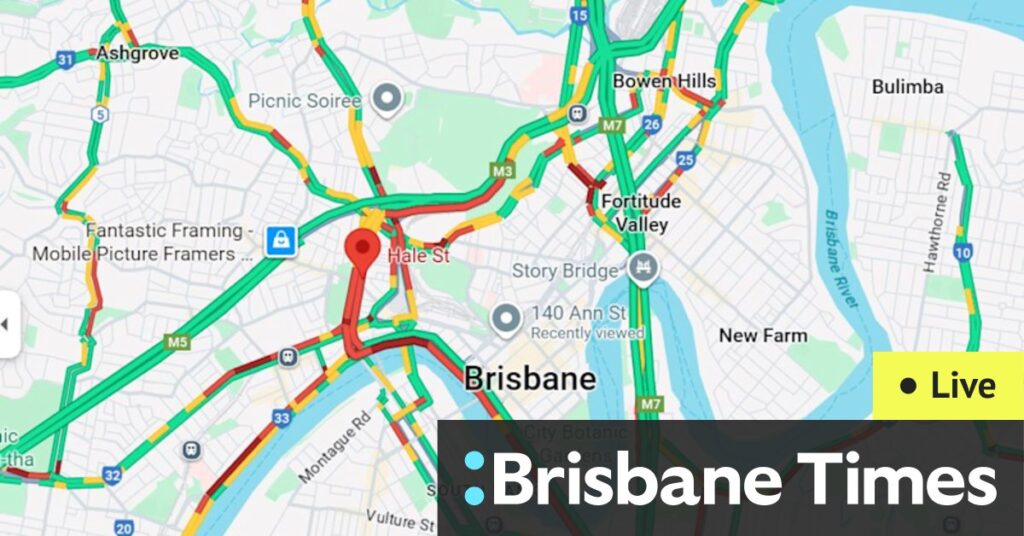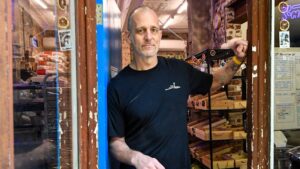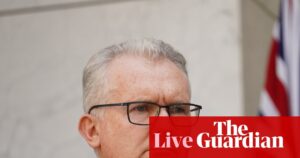
Brisbane’s Kurilpa Bridge will soon see a significant change as authorities move to formally separate walkers from e-scooter and bike riders. This decision comes over a year after the speed limit on the bridge was doubled. The car-free bridge, which connects South Bank to Tank Street in the CBD, will have lines painted to designate separate lanes for different users.
Previously, bike riders faced fines for exceeding the 10km/h speed limit until the state government raised it to 20km/h last April, aligning it with the Goodwill Bridge’s limit. A CCTV study had revealed that while the 10km/h limit was largely ignored, interactions between riders and walkers were generally not problematic. The government had initially planned to implement “soft segregation,” but this was delayed until a recent push from the Brisbane CBD Bicycle User Group prompted action.
Traffic Delays and Public Transport Disruptions
Meanwhile, commuters in Brisbane faced delays after a crash on the Inner-City Bypass caused significant congestion during peak hours. Liam Renton from the Australian Traffic Network reported,
“It’s still busy, but it’s not as bad as it was. There are delays on the Riverside Expressway all the way back to the Legacy Way Tunnel … but it was worse.”
The crash, which involved a single vehicle hitting a barrier near the Clem 7 on-ramp, did not result in serious injuries, but it did disrupt public transport schedules. Translink reported cancellations of several bus routes, including the 7.30am route 228 to Brisbane city and the 8.05am route 180 to Garden City. Additionally, a train fault led to the cancellation of the 8.04am Domestic Airport to Central train service.
BHP Job Cuts Amidst Royalty Dispute
In a major economic development, global mining giant BHP announced it will slash 750 jobs from its Queensland operations. The company attributes this decision to the state’s coal royalties regime, which it claims has pushed the market to a “crisis point.” The Crisafulli government has maintained its stance on not amending the royalties, despite ongoing pressure from the coal industry.
BHP’s Mitsubishi Alliance (BMA) in Central Queensland will see these job cuts, with the Saraji South mine in the Bowen Basin entering a care and maintenance phase starting November. BHP’s statement was clear,
“BHP and Mitsubishi Development do not want to see operations paused or jobs lost, but these are necessary decisions in the face of the combined impact of the Queensland government’s unsustainable coal royalties and market conditions,” said BMA asset president Adam Lancey.
Urban Development and Housing Plans
Brisbane is also set to undergo significant urban development changes as the city council plans to allow taller apartment towers near key shopping centers. The areas around Carindale and Indooroopilly shopping centers, along with Nundah Village, have been identified for this expansion due to their robust public transport links.
Currently, the building height limit near Carindale Shopping Centre is 10 storeys, while at Indooroopilly it is 20 storeys. The new council plan will ease restrictions for developers, allowing for taller buildings to meet housing demands. However, in Nundah, the limit will remain at 12 storeys, with adjustments for more flexible mixed-use developments.
Journalistic Integrity in the Spotlight
In international news, ABC journalist John Lyons made headlines after a tense exchange with former US President Donald Trump. Lyons questioned Trump’s wealth accumulation during his presidency, prompting a sharp response from Trump, who accused Lyons of being a “rude fake news loser.” The incident highlights the ongoing challenges journalists face in holding public figures accountable.
Lyons defended his approach, stating,
“I think our job as journalists is to ask questions that the average person would be interested in… They were not shouted. They were not abusive.”
Despite the backlash, Lyons emphasized the importance of journalistic inquiry in a deeply divided political landscape.
As Brisbane navigates these multifaceted challenges, from traffic disruptions and economic shifts to urban development and the role of journalism, the city remains at the forefront of significant change. The coming months will be crucial in determining how these developments will shape the future of Queensland’s capital.






